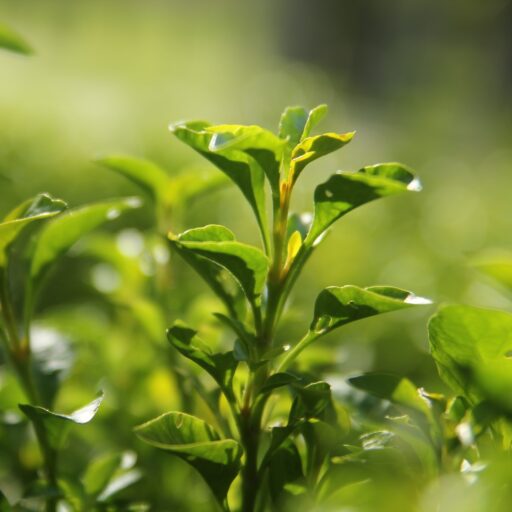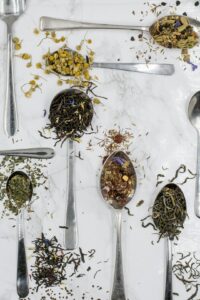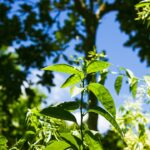Support our educational content for free when you purchase through links on our site. Learn more
Where Does Tea Grow Best [2024]
Did you know that the quality of tea can vary depending on where it is grown? The climate, soil, and altitude of a tea-growing region can greatly impact the flavor and characteristics of the tea leaves. In this article, we will explore the best regions for growing tea and delve into the factors that contribute to their success. So grab a cup of your favorite tea and join us on this journey!
Table of Contents
- Quick Answer
- Quick Tips and Facts
- Background: The Art of Tea Growing
- 1. The Birthplace of Tea: China
- 2. The Enchanting Tea Gardens of India
- 3. The Serene Tea Estates of Japan
- 4. The Lush Tea Plantations of Sri Lanka
- 5. The Emerging Tea Regions
- FAQ
- Conclusion
- Recommended Links
- Reference Links
Quick Answer
Tea grows best in regions with a warm, humid climate and ample rainfall. The tea plant, Camellia sinensis, thrives in deep, light, acidic, and well-drained soil. It can be grown in areas ranging from sea level to altitudes as high as 2,100 meters above sea level. Some of the best tea-growing regions in the world include China, India, Japan, and Sri Lanka.
CHECK PRICE on: Amazon | Walmart | Etsy
Quick Tips and Facts
- Tea grows best in regions with a warm, humid climate and at least 100 centimeters of rainfall per year.
- The tea plant, Camellia sinensis, thrives in deep, light, acidic, and well-drained soil.
- Altitude plays a crucial role in tea cultivation, with higher altitudes often producing teas with more complex flavors.
- Tea can be grown in areas ranging from sea level to altitudes as high as 2,100 meters above sea level.
- Different tea varieties, such as green tea, black tea, and oolong tea, have specific growing requirements.
Background: The Art of Tea Growing
Before we dive into the best tea-growing regions, let’s take a moment to appreciate the art of tea growing. Tea cultivation is a delicate process that requires expertise, patience, and a deep understanding of the tea plant. From selecting the right location to nurturing the plants and harvesting the leaves at the perfect time, tea growers dedicate themselves to producing the finest teas.
Tea plants belong to the Camellia sinensis species and are native to East Asia. They have been cultivated for thousands of years, with China being the birthplace of tea. Over time, tea cultivation spread to other parts of the world, each region adding its unique touch to the tea-making process.
Now, let’s explore some of the best tea-growing regions and the teas they produce.
1. The Birthplace of Tea: China
China, the birthplace of tea, boasts a rich tea culture that dates back thousands of years. The country is known for its diverse tea varieties, each with its distinct flavors and aromas. Some of the famous tea-growing regions in China include:
- Fujian Province: Known for its white tea, oolong tea, and jasmine tea. The mountainous terrain and mild climate create the perfect conditions for tea cultivation.
- Zhejiang Province: Famous for its green tea, particularly Longjing (Dragon Well) tea. The region’s hilly landscapes and abundant rainfall contribute to the tea’s unique flavor.
- Yunnan Province: Home to ancient tea trees, Yunnan Province produces pu-erh tea, a fermented tea with a rich and earthy flavor. The high altitude and fertile soil of the region contribute to the tea’s exceptional quality.
China’s tea-growing regions are steeped in history and tradition, making them a must-visit for tea enthusiasts.
2. The Enchanting Tea Gardens of India
India is another prominent player in the world of tea production. The country’s diverse climate and topography allow for the cultivation of a wide range of teas. Here are some of the notable tea-growing regions in India:
- Assam: Known for its robust and malty black teas, Assam is the largest tea-growing region in India. The region’s hot and humid climate, coupled with the fertile soil of the Brahmaputra Valley, creates the perfect conditions for tea cultivation.
- Darjeeling: Nestled in the foothills of the Himalayas, Darjeeling is famous for its delicate and aromatic black teas. The region’s cool temperatures and misty weather contribute to the unique flavor profile of Darjeeling tea.
- Nilgiri: Located in the southern state of Tamil Nadu, Nilgiri produces teas with a smooth and mellow flavor. The region’s cool climate and high altitude contribute to the tea’s unique characteristics.
India’s tea gardens offer a mesmerizing blend of natural beauty and tea culture, making them a must-visit for tea lovers.
3. The Serene Tea Estates of Japan
Japan is renowned for its green teas, which are known for their vibrant green color and umami flavor. The country’s tea-growing regions are meticulously maintained, and the tea-making process is steeped in tradition. Here are some of the notable tea-growing regions in Japan:
- Uji: Located near Kyoto, Uji is considered the birthplace of Japanese tea. The region’s fertile soil and misty climate create the perfect conditions for growing high-quality green teas, such as matcha and sencha.
- Shizuoka: Shizuoka is the largest tea-producing region in Japan, known for its sencha and gyokuro teas. The region’s mild climate and mineral-rich soil contribute to the tea’s unique flavor profile.
- Kagoshima: Located in the southernmost part of Japan, Kagoshima produces a wide range of teas, including sencha, matcha, and kukicha. The region’s volcanic soil and warm climate contribute to the tea’s distinct characteristics.
Visiting a traditional tea ceremony in Japan is an experience that immerses you in the country’s rich tea culture.
4. The Lush Tea Plantations of Sri Lanka
Sri Lanka, formerly known as Ceylon, is renowned for its black teas, which are loved for their bold flavors and bright colors. The country’s tea plantations are nestled amidst breathtaking landscapes, making them a sight to behold. Here are some of the notable tea-growing regions in Sri Lanka:
- Nuwara Eliya: Located in the central highlands of Sri Lanka, Nuwara Eliya is known for its delicate and aromatic teas. The region’s cool climate and high altitude contribute to the tea’s unique characteristics.
- Dimbula: Dimbula produces teas with a rich and full-bodied flavor. The region’s moderate temperatures and well-drained soil create the perfect conditions for tea cultivation.
- Uva: Uva is known for its teas with a brisk and lively flavor. The region’s high altitude and ample rainfall contribute to the tea’s unique characteristics.
Exploring the tea plantations of Sri Lanka is a treat for the senses, with the aroma of freshly plucked tea leaves filling the air.
5. The Emerging Tea Regions
While the aforementioned regions are well-established in the world of tea production, there are also emerging tea regions that are gaining recognition for their unique teas. These regions include:
- Kenya: Known for its black teas, Kenya’s tea industry has been growing rapidly in recent years. The country’s high altitudes and fertile soil contribute to the tea’s exceptional quality.
- Vietnam: Vietnam is one of the largest tea-producing countries in the world. The country’s diverse climate allows for the cultivation of a wide range of teas, including green tea and black tea.
- Nepal: Nestled in the Himalayas, Nepal produces teas with a distinct flavor profile. The region’s high altitudes and cool temperatures contribute to the tea’s unique characteristics.
Exploring these emerging tea regions allows you to discover new and exciting flavors that are making their mark in the tea world.
FAQ
Where does most tea come from in the US?
Most tea consumed in the US is imported from countries such as China, India, Kenya, and Sri Lanka. However, there are a few tea-growing regions in the US, such as Hawaii and parts of the Pacific Northwest, where tea is cultivated on a smaller scale.
Read more about “7 Surprising Facts About Growing Green Tea in the US …”
Where is the best tea grown in the world?
The best tea in the world is subjective and depends on personal preferences. However, some of the renowned tea-growing regions known for producing high-quality teas include China, India, Japan, and Sri Lanka.
Can you grow tea in the United States?
Yes, tea can be grown in the United States, particularly in regions with a suitable climate and soil conditions. Hawaii and parts of the Pacific Northwest are known for their tea cultivation. However, the US is not a major tea-producing country on a global scale.
Read more about “Will Green Tea Grow in Texas? …”
Why isn’t tea grown in the US?
Tea cultivation requires specific climatic and soil conditions, which may not be readily available in all regions of the US. Additionally, the cost of labor and competition from established tea-producing countries make it challenging for tea cultivation to be commercially viable in the US.
Conclusion
Tea is a beverage that transcends borders and cultures, and its flavor is deeply influenced by the regions in which it is grown. From the birthplace of tea in China to the enchanting tea gardens of India, the serene tea estates of Japan, and the lush tea plantations of Sri Lanka, each tea-growing region offers a unique experience for tea enthusiasts.
Whether you prefer the delicate flavors of green tea, the boldness of black tea, or the complexity of oolong tea, exploring the tea-growing regions of the world allows you to embark on a sensory journey like no other.
So, the next time you sip your favorite cup of tea, take a moment to appreciate the artistry and craftsmanship that goes into its cultivation. Cheers to the world of tea!
Recommended Links:
- Green Tea Cultivation
- Herbal Tea Planting
- Tea Plant Varieties
- Soil and Climate for Tea
- Herbal Tea Seeds: Grow Your Own Medicinal Tea Garden 2024
Reference Links:







